

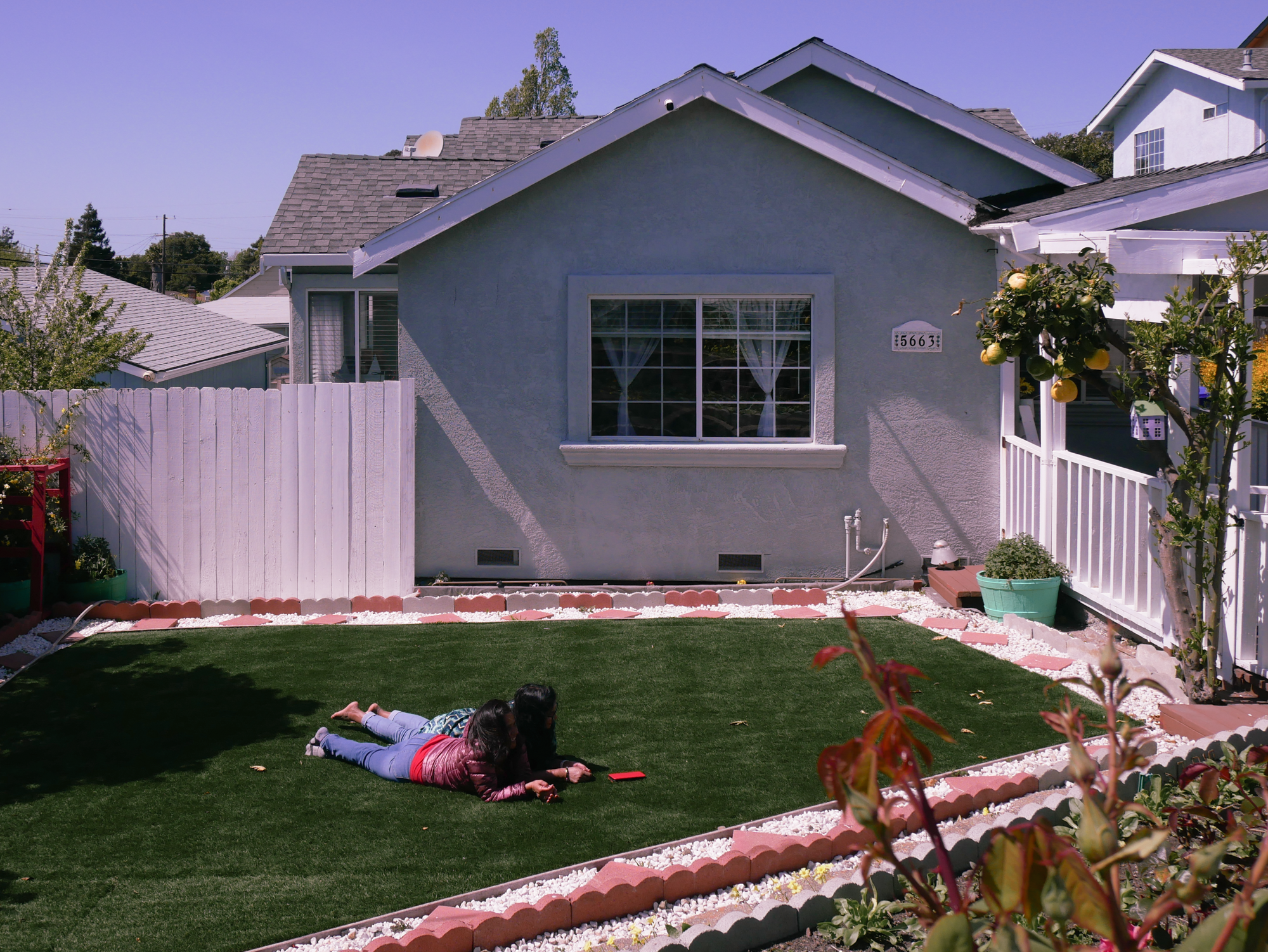







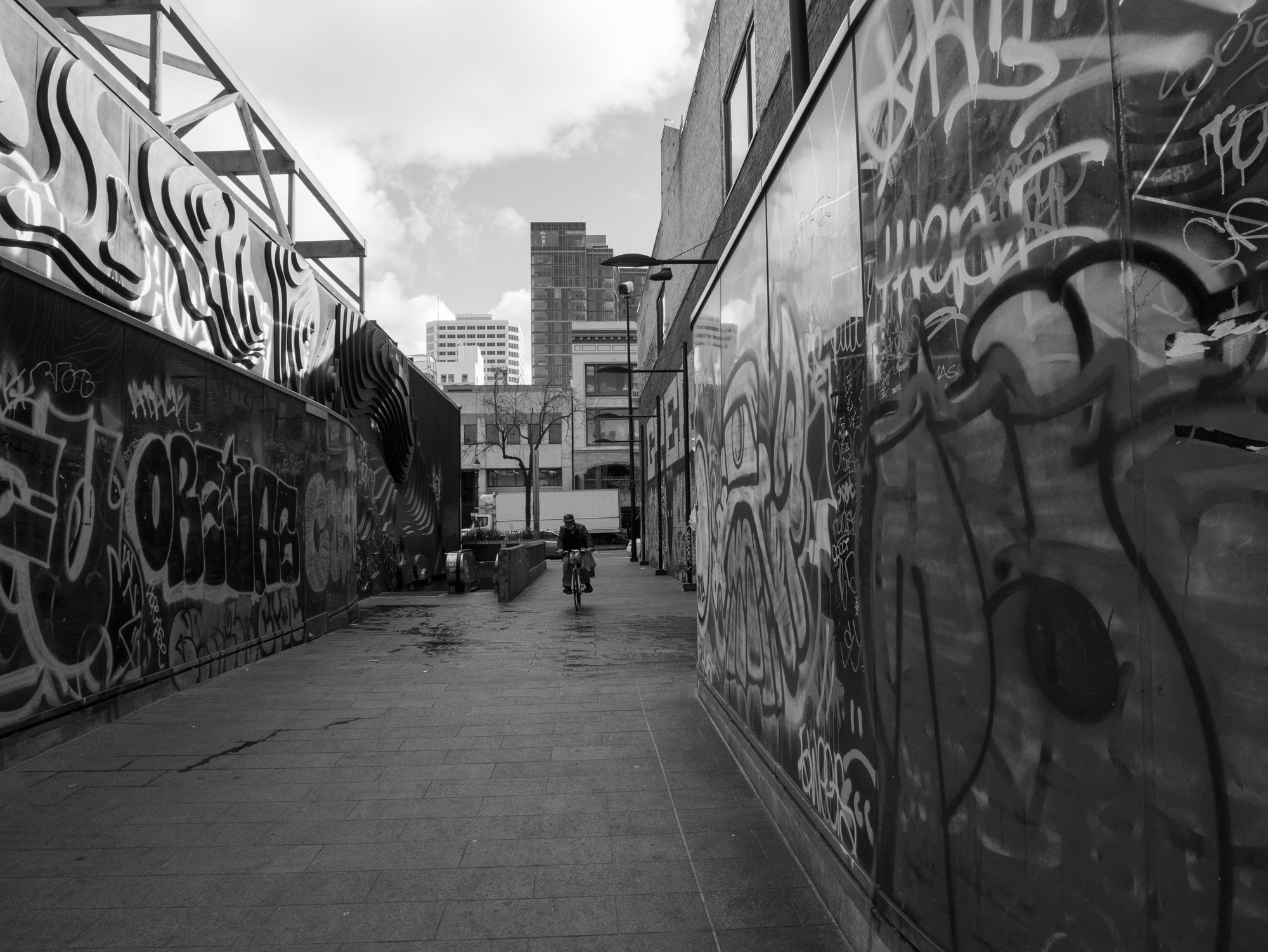



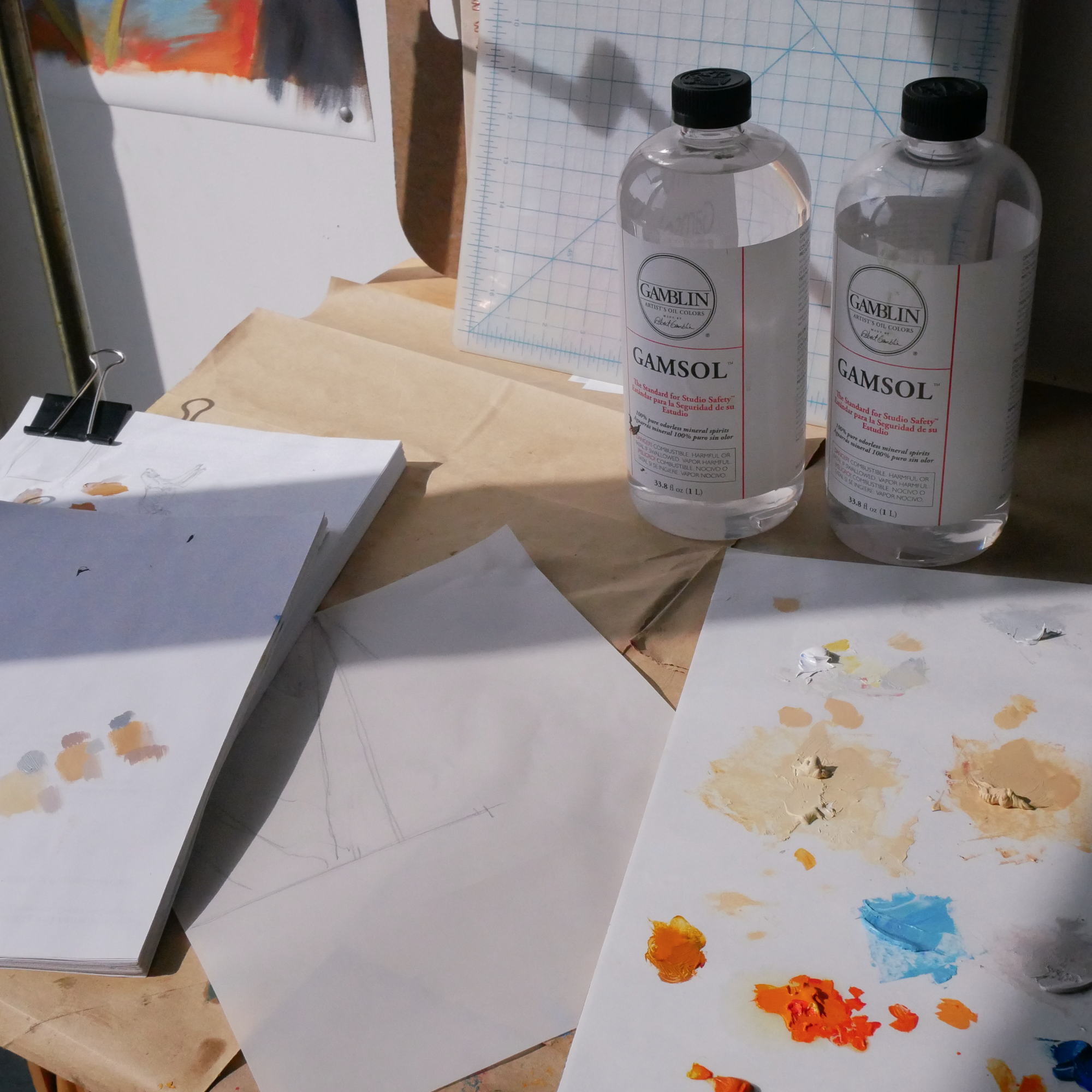



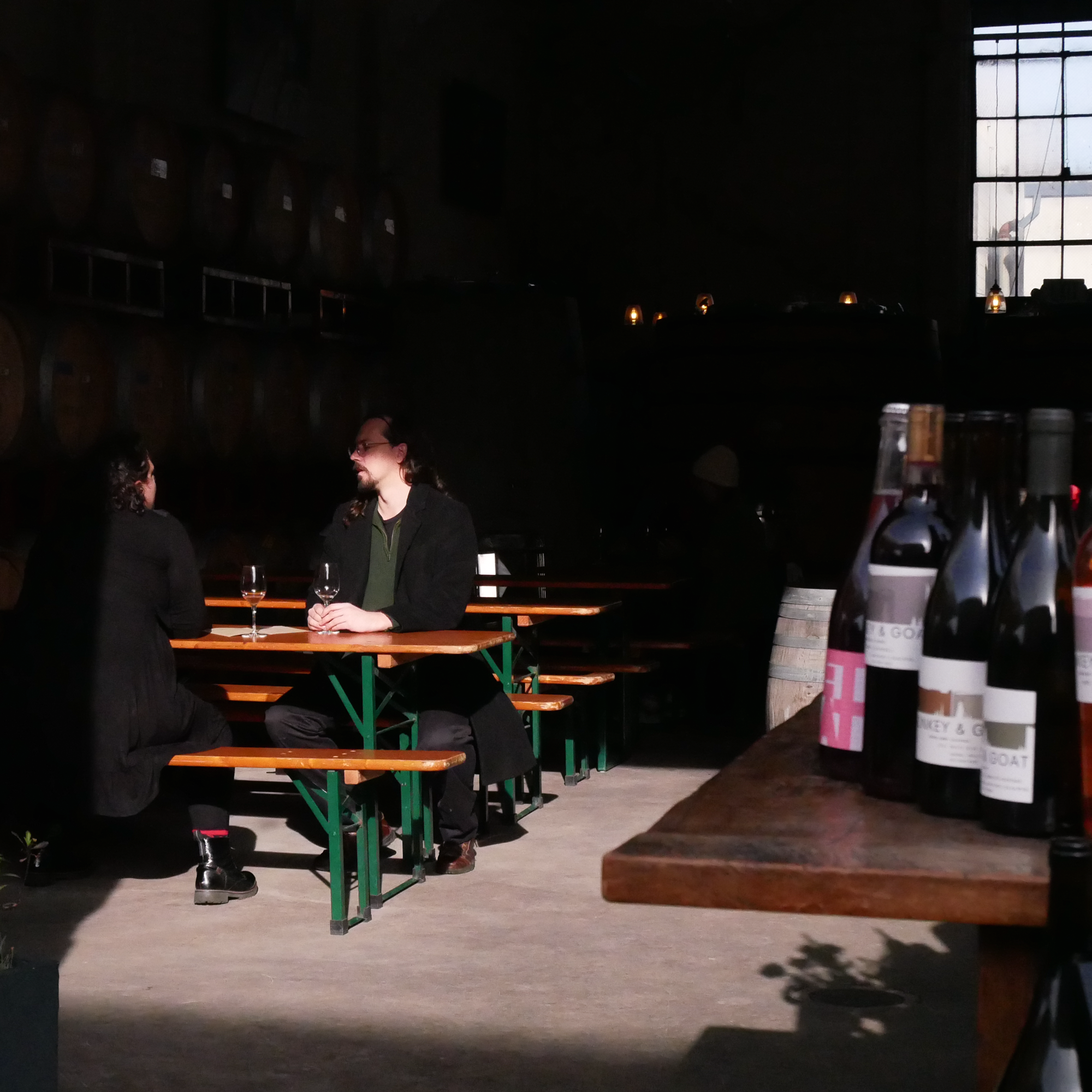


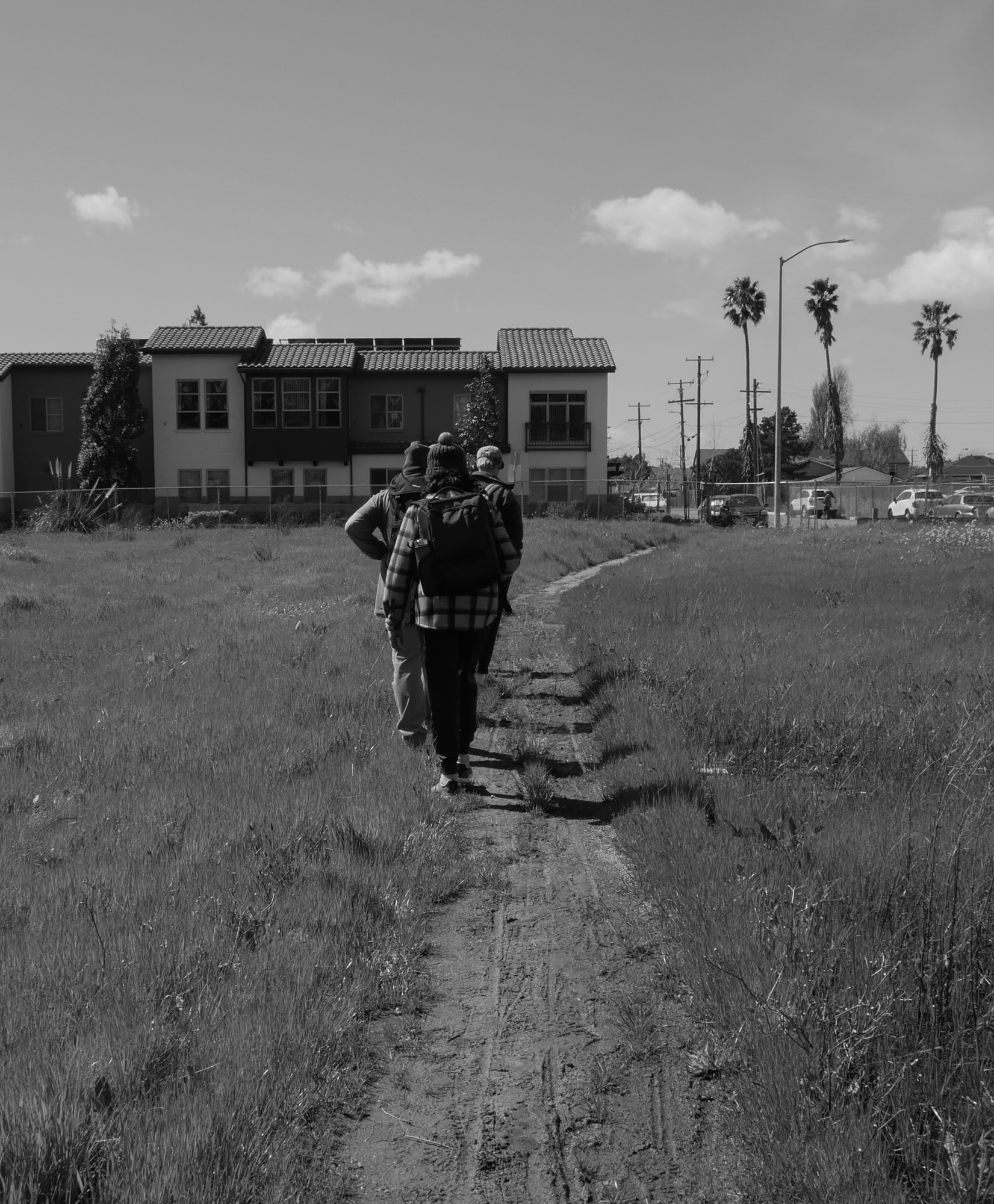



Persistence of Life Along San Pablo Ave by Theresa Guey
What makes a place? The presence of life is one thing for me, or at least evidence of life. Whether it’s shown through abandoned buildings or weekly block parties, I believe that placemaking is the result of people interacting with their environment, or interacting with one another in relation to their environment. At the beginning of this project, I set out to learn more about the East Bay and document the process. As I got more experience taking photos, I realized what kinds of stories and visuals I was drawn to. I became more purposeful with my photography in the latter half of the semester, and started choosing and seeking scenes that contributed to the overarching story I was beginning to form: one that shows the persistence of life in spite of struggles.
It is a known fact that a majority of people have to work to live, an often exhausting task that leaves them wanting release. I saw evidence of this along San Pablo Avenue, not only in the various small (often immigrant-owned) business storefronts, but also in the ways people sought out the little joys in life. People invest in hobbies, engage in recreation, and personalize the spaces they lay claim to. They build a sense of community, and my camera is witness to curated identities along the way. I would also like to mention at this point the role gentrification has played in the shaping of local environments. While not at the forefront of my project, gentrification has been a driving factor behind the movement of populations in the East Bay. Even a couple of decades ago, some of the scenes I’ve captured might have looked very different, so I am very moved by peoples’ resilience as they continue to make homes for themselves when it might not have been their choice to be there in the first place.
In sequencing my photos, it was tempting to organize all of them by color, because aesthetics were what came to my mind at first. It was mostly coincidental that, by splitting my photos into two sections, I ended up with a sequence that had a relatively smooth transition between ‘moods’—some of the photos were dark with a pinkish tint and others were taken in natural sunlight. The two sections mentioned above are not so clear-cut, but more so my way of differentiating between the first half which features almost no human subjects, and the second half which sees a dramatic increase of people being centered in the photographs.
In terms of technique, I learned a lot about framing architecture, the impact of lighting, and photo processing, through experimentation and practice. It has been a privilege to be a part of this methods course in its first run because it will continue to evolve as different students bring in their own perspectives. It is a course I would recommend for anyone interested in photography but more importantly storytelling. Hopefully I’ve told a compelling story with my collection of photographs that this statement accompanies.